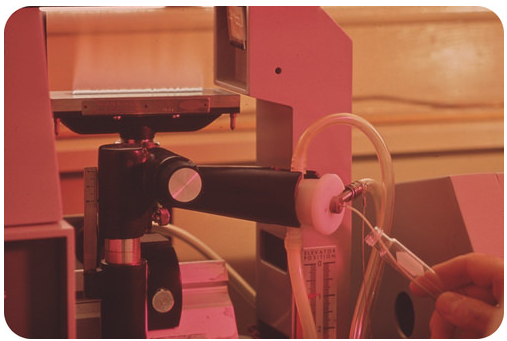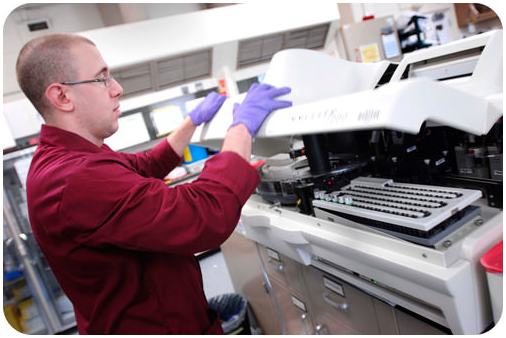1.4: Areas of Chemistry
- Page ID
- 52287
The study of modern chemistry has many branches, but can generally be broken down into five main disciplines, or areas of study:
- Physical chemistry
- Organic chemistry
- Inorganic chemistry
- Analytical chemistry
- Biochemistry
Physical Chemistry
Physical chemistry is the study of macroscopic properties, atomic properties, and phenomena in chemical systems. As examples, a physical chemist may study the rates of chemical reactions, the energy transfers that occur in reactions, or the physical structure of materials at the molecular level.
Organic Chemistry
Organic chemistry is the study of chemicals containing carbon. Carbon is one of the most abundant elements on Earth and is capable of forming a tremendously vast number of chemicals (over twenty million so far). Most chemicals found in every living organism are based on carbon.
Inorganic Chemistry
Inorganic chemistry is the study of chemicals that do not, in general, contain carbon. Inorganic chemicals are commonly found in rocks and minerals. One current important area of inorganic chemistry deals with the design and properties of materials involved in energy and information technology.
Analytical Chemistry
Analytical chemistry is the study of the composition of matter. It focuses on separating, identifying, and quantifying chemicals in samples of matter. An analytical chemist may use complex instruments to analyze an unknown material, in order to determine its various components.

Biochemistry
Biochemistry is the study of chemical processes that occur in living things. Research may cover basic cellular processes up to understanding disease states, so that better treatments can be developed.

In practice, chemical research is often not limited to just one of the five major disciplines. A chemist may use biochemistry to isolate a particular chemical found in the human body such as hemoglobin, the oxygen carrying component of red blood cells. He or she may then proceed to analyze the hemoglobin using methods that would pertain to the areas of physical or analytical chemistry. Many chemists specialize in areas that are combinations of the main disciplines, such as bioinorganic chemistry or physical organic chemistry.
Summary
- Five areas of chemistry are described:
- Physical chemistry
- Organic chemistry
- Inorganic chemistry
- Analytical chemistry
- Biochemistry
Review
Match the project with the proper chemistry discipline.
| a. measuring mercury in seawater | 1. biochemistry |
|---|---|
| b. studying enzymes in cells | 2. organic chemistry |
| c. measuring the electrical properties of solutions | 3. inorganic chemistry |
| d. synthesizing new carbon compounds | 4. physical chemistry |
| e. making new compounds for energy processes | 5. analytical chemistry |
Explore More
1. Do an internet search using one of the five chemistry areas as a search term. List two significant contributions made to chemistry by that area.

